Overall Farm Bankruptcies Down, But Not in All Regions
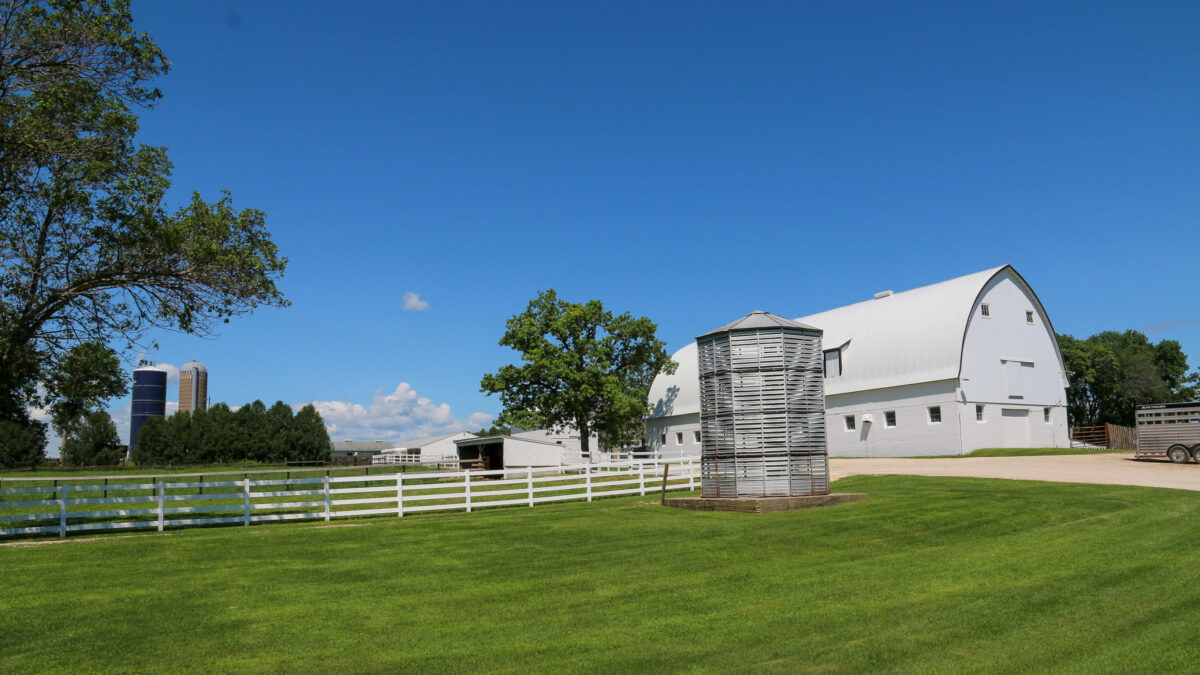
photo credit: Alabama Farmers Federation, Used with Permission
Veronica Nigh
Former AFBF Economist
Despite an incredibly challenging previous 18 months that included a global pandemic and tumultuous weather, higher commodity prices and well-timed government support have finally turned the tide on year-over-year increases in Chapter 12 bankruptcy filings. According to data from the U.S. Courts, from June 2020 through June 2021, there were a total of 438 Chapter 12 bankruptcy filings, down 24%, or 142 bankruptcies. The number of Chapter 12 filings over the previous 12 months is the lowest since 2015’s 357 filings. The decrease in bankruptcy filings is a noteworthy shift given the significant increases in the number of bankruptcies over the previous three years.
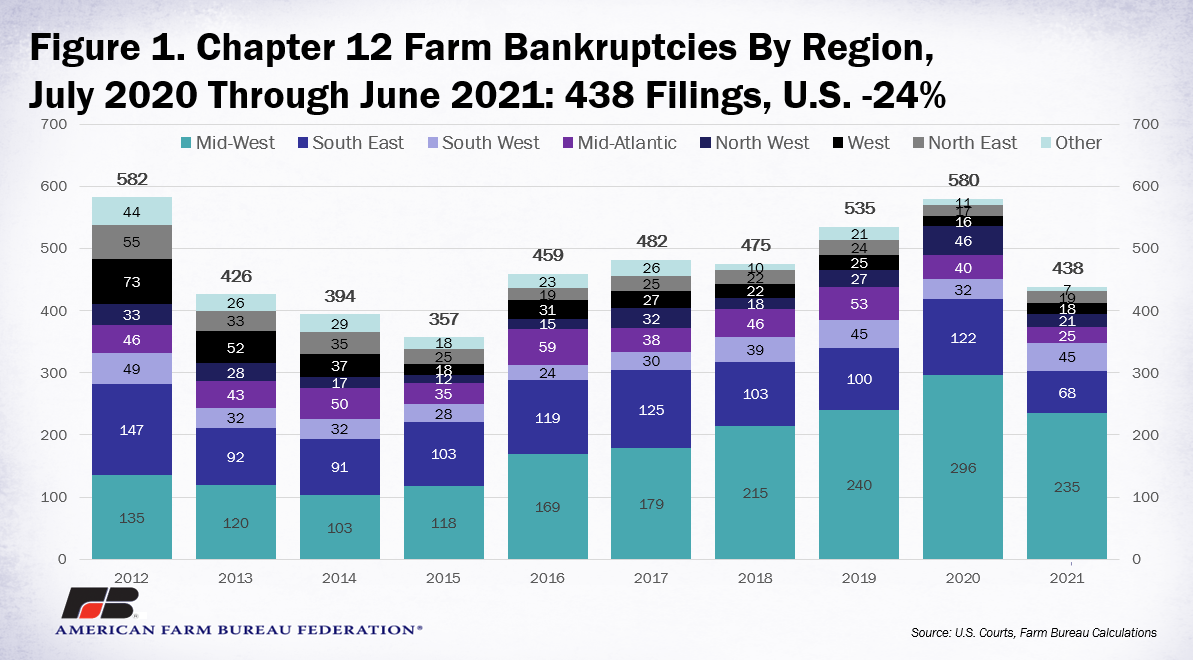
Chapter 12 Bankruptcies by Region
The ongoing impact of the severe drought in the West and Upper Plains is evident in the number of Chapter 12 bankruptcies filed in those regions. The region with the largest increase in the number of Chapter 12 filings by both absolute number and by percentage increase was the Southwest, which had 13 more Chapter 12 bankruptcies in the past year, an increase of 41% from the 12-month period ending June 2020. Filings increased in three of the six states in the Southwest -- Colorado, Oklahoma and New Mexico. California, which is one of two states in the West district court region, reported 18 Chapter 12 filings, an increase of 13% from the 12-month period ending June 2020. Overall, filings increased in the Northeast, but the number varied considerably among states in the region. For example, Connecticut and Rhode Island had no filings, while Maine had three, the same number of filings as the previous the 12 months. New Hampshire had two more filings that in the 12 months previous, while Vermont had six more filings than in the 12 months previous, an increase of 86%. Filings in Massachusetts dropped by 86%, or six filings.
Other parts of countries had better news. Four regions had double-digit declines in the number of Chapter 12 filings by both absolute number and by percentage. The Southeast had 54 fewer Chapter 12 bankruptcies in the past year, down 44% from the 12-month period ending June 2020. The Midwest, which still leads all regions in the number of filings with 235, had 61 fewer Chapter 12 bankruptcies in the past year, down 21% from the 12-month period ending June 2020. The Northwest had 25 fewer Chapter 12 bankruptcies in the past year, down 54% from the 12-month period ending June 2020. Finally, the mid-Atlantic had 15 fewer Chapter 12 bankruptcies in the past year, down 38% from the 12-month period ending June 2020.
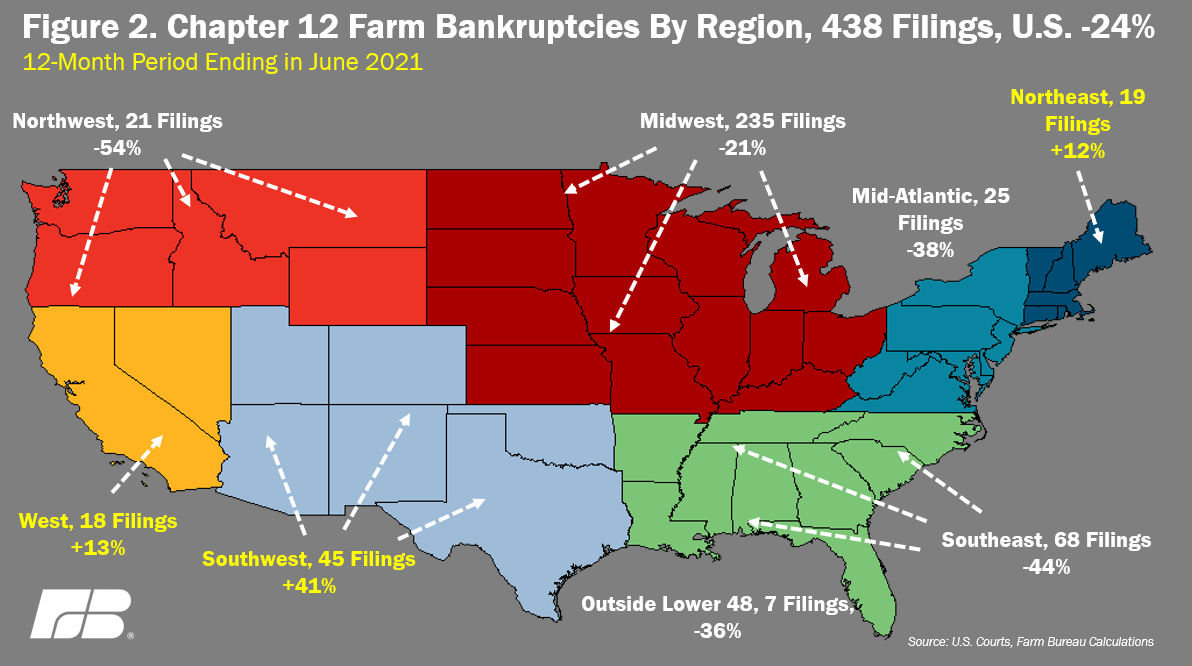
Chapter 12 Bankruptcies by State
Total bankruptcies filed by state vary significantly, from no bankruptcies in some states to as many as 48 filings in others, as shown in Figure 2. Alaska, Connecticut, Hawaii, Nevada, Rhode Island, West Virginia and Wyoming had no Chapter 12 bankruptcies filed in the past year. These states have consistently had low numbers of bankruptcies in the past decade. In contrast, Wisconsin, Minnesota and Kansas led the nation in Chapter 12 filings; though there were fewer filings in each of these states than there were in the previous year.
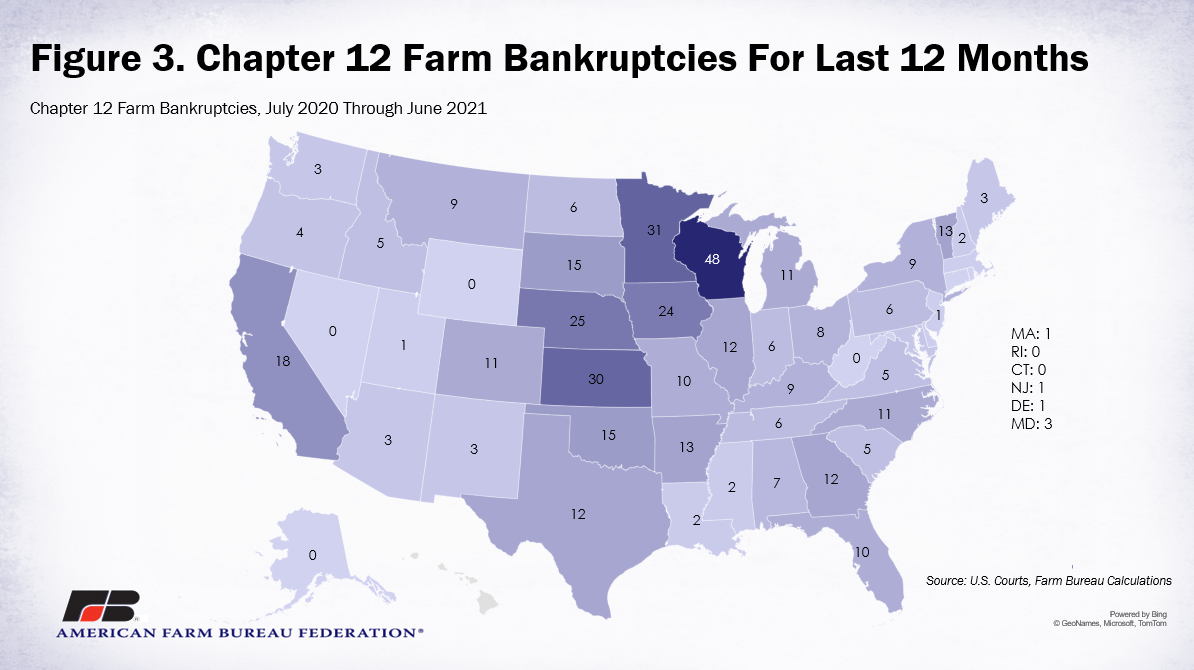
As seen in Figure 4, in 30 states total bankruptcy filings were down, while filings remained constant in nine states and increased in 11 states. In some states, those increases were significant. Both Colorado and Oklahoma had nine more Chapter 12 bankruptcies in the past year, up 450% and 150%, respectively, from the 12-month period ending June 2020.
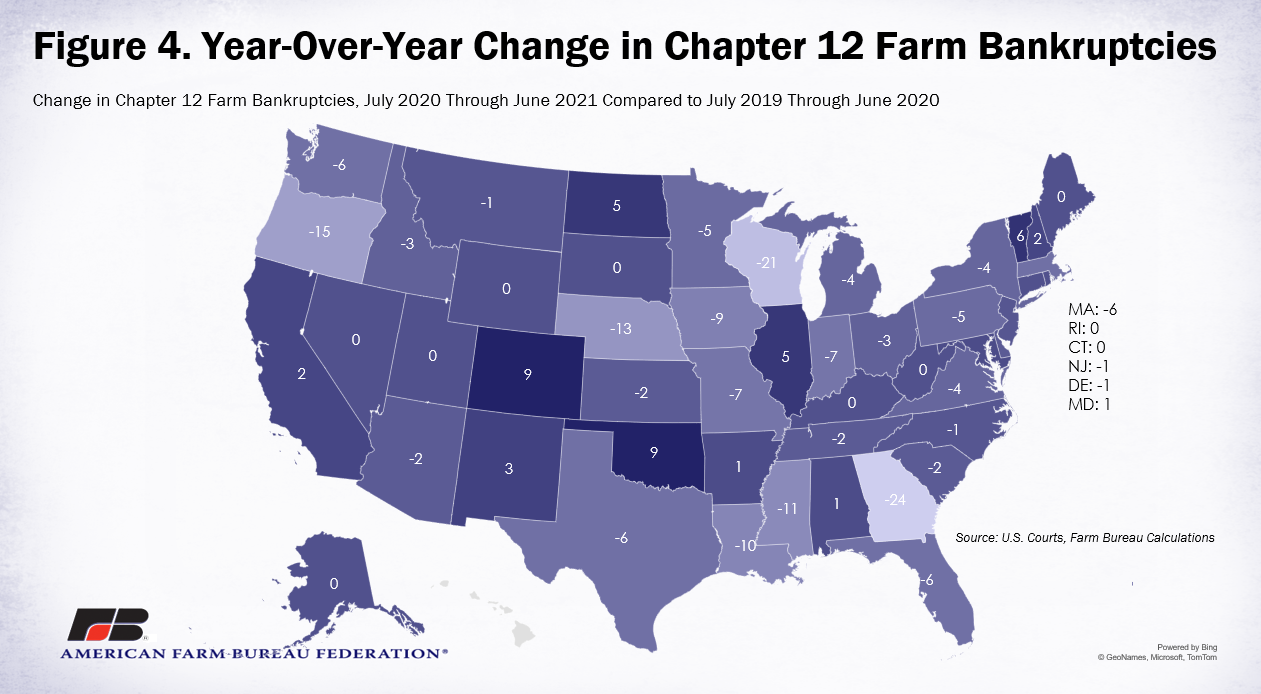
Six states had a double-digit decline in the number of filings: Georgia, Mississippi and Louisiana in the Southeast; Wisconsin and Nebraska in the Midwest; and Oregon in the Northwest. Georgia and Wisconsin had the largest declines. Wisconsin, with 48 filings, still leads the nation in the number of Chapter 12 filings, but the state had 21 fewer Chapter 12 filings in the past year, down 30% from the 12-month period ending June 2020. Georgia had 24 fewer Chapter 12 bankruptcies in the past year, down 67% from the 12-month period ending June 2020.
Summary
It is heartening to finally be able to write that farm bankruptcies have not risen from the year previous. However, one data point does not make a trend and we must caution against becoming too confident that the worst is behind us. Many operations were forced to dip down deep into their savings after several years of low commodity prices and volatile international demand. It will take many consecutive good years to rebuild those financial reserves. Until then, unfortunately, many farms and ranches are one natural disaster, international trade spat or interest rate hike away from finding themselves on the red side of the ledger.
Trending Topics
VIEW ALL